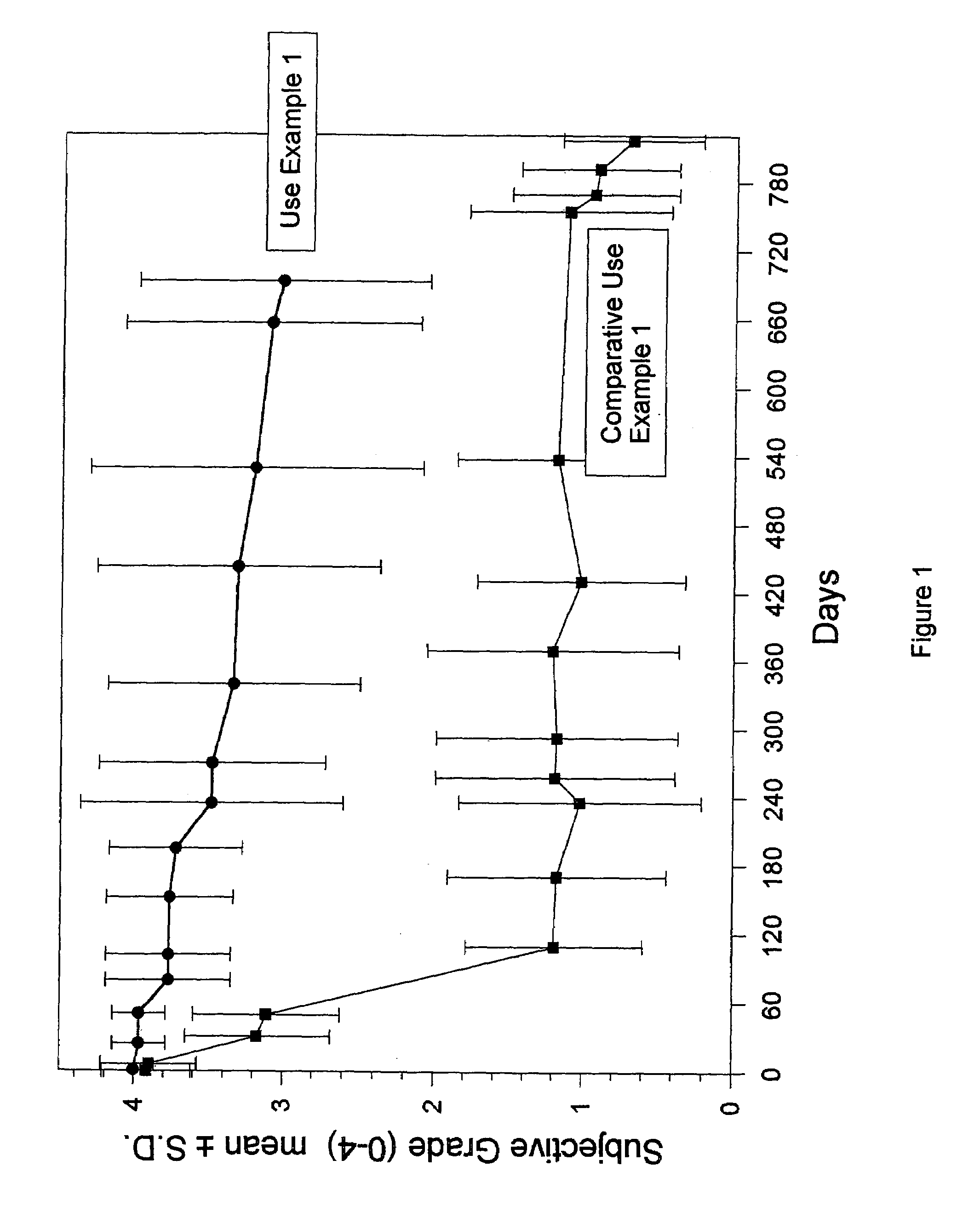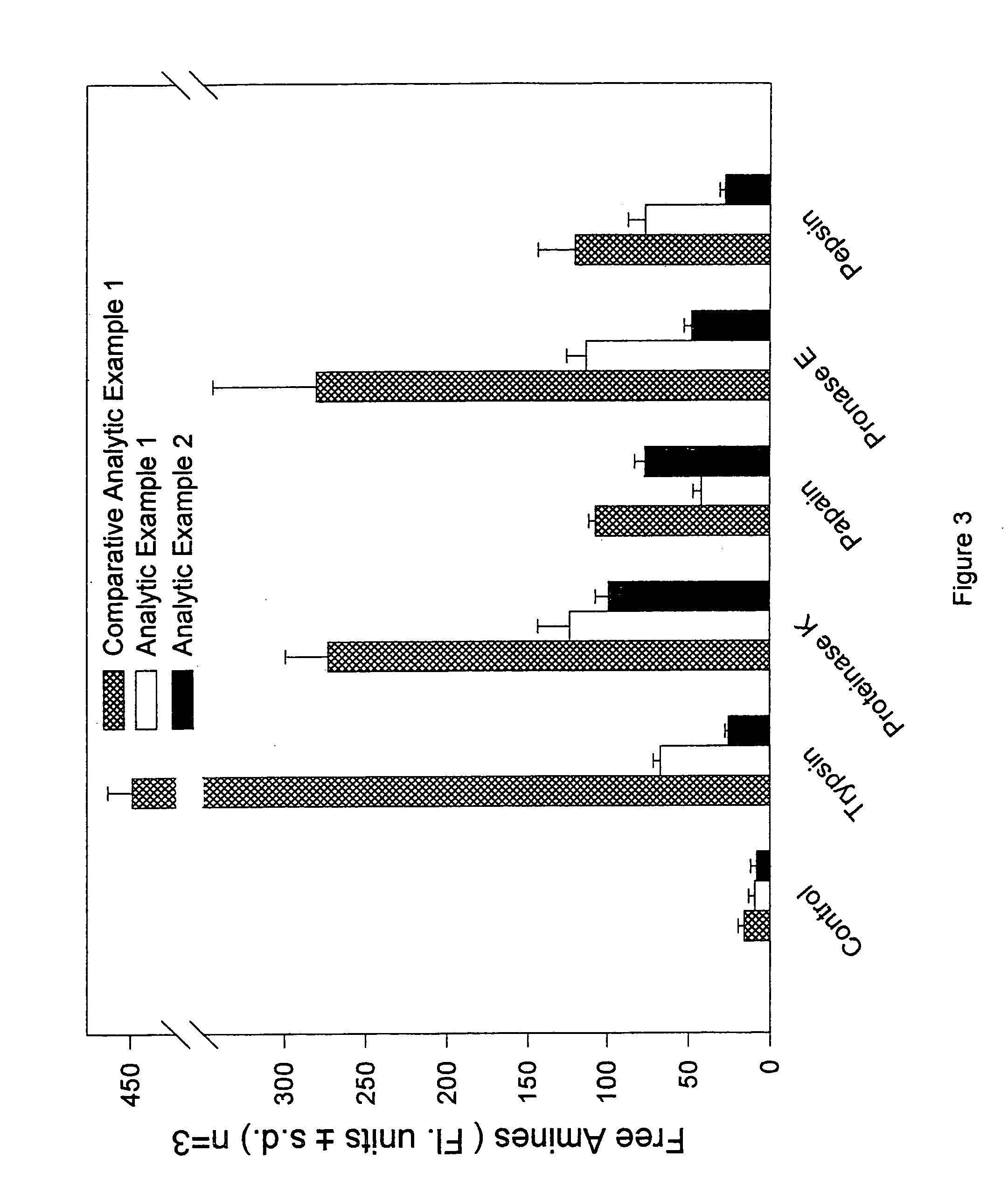Materials for soft tissue augmentation and methods of making and using same
a soft tissue and augmentation technology, applied in the field of materials for soft tissue augmentation and making and using same, can solve the problems of inability to properly inject materials, and inability to properly inject fat, etc., to achieve non-antigenic, easy-to-inject, and resistance to proteolytic cleavage
- Summary
- Abstract
- Description
- Claims
- Application Information
AI Technical Summary
Benefits of technology
Problems solved by technology
Method used
Image
Examples
preparation example 1
[0050]An injectable material in accordance with the present invention was prepared as follows. Venous blood was withdrawn from a patient using a standard syringe method. The blood was contained in two collection tubes having an 8.5 mL draw capacity with glycerated stoppers and each containing 1.5 mL of an aqueous solution which included trisodium citrate at 22 g / l, citric acid at 8 g / l and dextrose at 25 g / l. The collection tubes, which did not contain any EDTA, were VACUTAINER® evacuated specimen tubes having HEMOGARD™ closures having shielded stoppers and outer rims. These tubes can be obtained from Becton-Dickinson or distributors.
[0051]The tubes containing the withdrawn blood were centrifuged at room temperature for 10 minutes at a speed of 1500 rpm (654 relative centrifugal force (“RCF”)), using a Sorvall RC3C centrifuge in an H6000A swinging bucket rotor to separate the plasma from the cellular materials. Approximately 10 mL of plasma was removed from the tubes using a sterili...
preparation example 2
[0059]An injectable material for soft tissue augmentation was prepared in accordance with Example 1 except that 1.1 grams of pure EDAC were added, corresponding to 1% EDAC by w / v.
preparation example 3
[0060]An injectable material for soft tissue augmentation was prepared in accordance with Example 1 except that 0.11 grams of pure EDAC were added, corresponding to 0.1% EDAC by w / v.
PUM
| Property | Measurement | Unit |
|---|---|---|
| temperature | aaaaa | aaaaa |
| temperature | aaaaa | aaaaa |
| temperature | aaaaa | aaaaa |
Abstract
Description
Claims
Application Information
 Login to View More
Login to View More - R&D
- Intellectual Property
- Life Sciences
- Materials
- Tech Scout
- Unparalleled Data Quality
- Higher Quality Content
- 60% Fewer Hallucinations
Browse by: Latest US Patents, China's latest patents, Technical Efficacy Thesaurus, Application Domain, Technology Topic, Popular Technical Reports.
© 2025 PatSnap. All rights reserved.Legal|Privacy policy|Modern Slavery Act Transparency Statement|Sitemap|About US| Contact US: help@patsnap.com



